I made a Tinkering Bell practicum video on crafting Holy Anointing Oil, as it had been instructed in the Book of Exodus, and also the derivatives found in later occult texts, such as the Book of Abramelin, a medieval grimoire on Kabbalistic magic, and Aleister Crowley’s Book of the Law.
Today, the day of the posting, January 15, we see the sun and moon in Capricorn already (quite the stellium going on in Capricorn right now actually). Tomorrow January 16 is the new moon in Capricorn and at 6:00 pm Pacific Time (you’ll need to do a time zone conversion accordingly), both the sun and moon will be at exactly 26 degrees. I’m sharing this practicum one day before the new moon so you have some time to make preparations as needed, should you want to try crafting the oil for yourself.
This accompanying blog post is an addendum to the video, where I reflect on my personal impressions. What I’m sharing here are based on the journal entries I logged while crafting this oil.
Watch the video first before reading any of the below, as everything onward will presume you’ve already seen the video.
Illustrated Recipe
The video is long and there are no pictures in the companion written reference download. I understand that in the era of Instagram, we need pictures, so here are pictures. This is an illustrated recipe for my variation on the Holy Anointing Oil, as demonstrated in Tinkering Bell Episode #6.
First, we’ve got to cover the four key ingredients for the Holy Anointing Oil per the Book of Exodus. According to the Book of Exodus, you need the four ingredients pictured above in the following proportions:
- 27% myrrh
- 14% Ceylon cinnamon
- 14% sweet calamus
- 27% cassia cinnamon
- 18% olive oil
In the west, by and large “sweet cane” is interpreted as sweet calamus, or sweet flag (acorus calamus root). So that’s what’s pictured above.
However, in the Biblical and botanical research I did in preparation for this, I found compelling scholarly text that the translation should be to lemongrass rather than sweet calamus. So in my version, I went with lemongrass for round #1, #2, and #5 (sun-dried for #5) and then sweet calamus root for #3, #4.
Psst…if you consider the science of perfumery, sweet calamus will form the base notes of your final oil result, whereas if you use lemongrass, lemongrass forms the top notes of your final oil result. With the recurring emphasis on “sweet” in the Biblical text, lemongrass makes more sense than calamus because the scent of calamus is far from being “sweet.” Instead, it kind of has the scent of a bitter Chinese medicine your grandmother would make you take if you cry of a stomach ache. Purely from an olfactory and aesthetic point of view, your better bet is going to be lemongrass.
My variation also included Ceylon cinnamon leaf for the first round of maceration, then for all other rounds I went with Ceylon cinnamon bark. Each round also contained frankincense resin, star anise, and angelica root.
It is then topped off with premium extra virgin olive oil. In terms of proportions, your olive oil should make up about 20%. You’ll see that since I went through multiple rounds of maceration, in the beginning there was more oil than spices, but by the final round of maceration, oil to all spices ratio was about 18 to 82.
Supplemental Downloads
For the supplemental handout, please download:
HOLY ANOINTING OIL
RECIPE INSTRUCTIONS (PDF)
Click on above link to download.
If you’re looking for the Fu Talisman Protection Mat featured in the video or some more info on what the heck that “Triangle of Fire” per Chinese metaphysics I referenced is all about, check the below downloads:
FU TALISMAN PROTECTION MAT (JPG)
Click on above link to download.
At some point during the video, I mention the Triangle of Fire. I may have referred to it as the Trinity of Fire. Can’t remember. Either way, the below image illustrates what I mean and if you click on the image, you can taken to a scanned page of verbiage about the Triangle (or Trinity) of Fire.
“TRIANGLE OF FIRE” (JPG)
Click on above link to download.
For my personal variation of the recipe, I used the Great Compassion Mantra dharani. You can download a free copy of the dharani text below.
GREAT COMPASSION MANTRA (PDF)
Click on above link to download.
If you’re not familiar with the dharani, then read the post I wrote up about it first. The post is linked below. It’ll help you to get a sense of what the above document even is.
GREAT COMPASSION MANTRA, 大悲咒
Homework: Your Practicum
Following each installment of the series will be a suggested practicum, or homework, for you to try out. Homework material presumes that you are an occult practitioner who is working on developing your craft.
Holy Anointing Oil: Check out the variations of holy anointing oil recipes provided and follow the instructions to craft your own bottle of holy anointing oil. If you are an experienced novice, then follow one of the set recipes as instructed, without deviation. Do so for at least the first time you try crafting holy anointing oil. Then after you’ve followed one of the set recipes as instructed, deviate and add your own creative or personal touches to the recipe. When you start deviating, take notes and document your own recipe. Finalize a go-to recipe for holy anointing oil and memorialize it into a page or page spread in your grimoire.
Triangle of Fire: Download the reference file above for the Triangle of Fire energy points on your body. Read the reference and integrate personal energy cultivation practices for strengthening your Triangle or Trinity of Fire. Create a page in your grimoire to document the Triangle of Fire (or Trinity of Fire) as a cultivation practice that will fortify your personal powers as an occult practitioner and ultimately, as an energy healer. The stronger your Trinity of Fire, the stronger you will be, your craft will be, and the more resilient to environmental toxins, both physical and metaphysical, you will be.
Personal Experience Crafting the Oils
I began my preparations the eve before the new moon and fasted sun up to sun down for the whole weekend, including the whole day of the new moon. By the way, fasting sun up to sun down during the winter season is not that bad at all– sun doesn’t freakin’ rise until like 7:30 am-ish anyway, and sets pretty much at 5 pm, so “fasting” still allows for dinner…I just eat after the rituals that take place on the days I’m fasting. Oh, also, I was vegetarian and on a Buddhist diet.
It so happened that during the time I commenced crafting, I was home alone. I had the whole house to myself for the week and the weekend. Lots of kind of weird things happened. I’d hear the wind blow hard and seem to slam against the windowpanes, but when I stepped outside and left my property line, the weather was totally calm. Lights flickered. All my candle flames were inordinately large– and it wasn’t like I was using new brands of candles I wasn’t familiar with– I was using the same old, same old. And the flames were noticeably larger than usual.
On a general note, through the period I was crafting the oil, spirit presence or… I won’t even say that…let’s just say the feeling that someone is looking over your shoulder even though no one is there…yeah, that feeling…was really strong the whole time. It felt benevolent and it also felt masculine.
Mid-way through the process, intuitively I just felt compelled to transform the entire area where the main anointing oil I was working on into its own altar, with the giant jar of oil at the front and center of the altar arrangement, much the way you might place the statue of a deity.

When I did tarot readings around the jar, I felt an invisible yet detectable pull over my cards while I was shuffling or handling them, and I felt like my readings were more powerful. I seemed to pull an unusually greater number of Majors than usual. All of the above snapshots of cards were of actual tarot readings I did for myself on the same table my main holy anointing oil was resting on.
All just subjective perceptions and biased pattern spotting? Maybe. I’m not closed off from acknowledging that could totally be it. Still. I’ll just say that the crafting of the holy anointing oil was quite the experience.
Am I saying it is always that way and will be that way for everybody? What I am saying is what you put in is what you’ll get out. Undergoing the process yourself is an incredible, powerful, memorable practicum in craft. It’s not about crafting the oil even. It’s about teaching you, as a practitioner, about craft. I can’t explain. Just try it. And when you try it, really go all out and be hardcore about it. Like I said. The practicum itself, when you approach it with gravity, is a teaching moment.
Spontaneous Glass Breakage!
Whether you can heat your glass mason jars directly on your stovetop depends on how high you plan on taking the heat and also the quality of your mason jar. I’ve heated mason jars directly on my stovetop for years without issue (using very, very low heat), so I never knew about spontaneous glass breakage.
You may have noticed that the footage used in the video shows what seems to be different jars of the oil preparation. That’s right. I needed control groups and simultaneously worked with different recipe instructions (Book of Exodus, Book of Abramelin, Book of the Law, and my own variations).
One of those jars is Crowley’s exact recipe, except instead of using essential oils, I decided to use Crowley’s recipe but undergo the heat enfleurage one-month infusion process with fresh ingredients instead of commercial-bought essential oils (i.e., following the “Art of the Apothecary”).
On Christmas Day, the jar containing Crowley’s exact recipe exploded. Everything was going fine. The jar finished its time on the stovetop. I removed it from the stove, set it aside to cool down to room temperature. Then I left my kitchen and went upstairs.
About an hour later, we hear a loud, startling pop. My in-laws were at our home at the time. The mother-in-law went into the kitchen, I suppose, saw it, then just started screaming. That’s when James and I rushed downstairs to see what happened.
It wasn’t that the glass mason jar cracked. Oh no. It exploded like a bomb. Fortunately, no one was in the kitchen at the time so no one was hurt. There were shards of glass EVERYWHERE. The spices everywhere. And of course, the kitchen countertop was an oily mess. Unfortunately, I have no pictures because the whole event was a frenzy while we tried to usher all vulnerable members of the family as far away as possible and then proceeded to clean the kitchen top down. On Christmas Day. Just before the kitchen would be needed again to begin preparations for dinner.
And so yeah. That is why for the silent auction of the oils (see below), you don’t get the Crowley version via “Art of Apothecary.” It’s because that jar exploded in my kitchen on Christmas Day.
And that’s also why I kept going on and on in the video about spontaneous glass breakage and not heating oils in glass mason jars. Because after the explosion, I went to do some reading to figure out what the hell happened and it was then that I learned about spontaneous glass breakage.
Blending Traditions
What are the chances someone is going to ask me about or, better yet, go straight to criticism of blending esoteric traditions?
Hey, from my observations, YouTube cooking channels and occult channels get dinged by the same trolls. “This isn’t authentic! Fusion is the misappropriation of cultures!” If you’ve never read the comments section of a YouTube video of a non-Chinese cooking Chinese food, non-Mexican cooking Mexican, non-French cooking French, etc., or anybody at all cooking fusion cuisines, then oh boy, there is a whole segment of society you’ve been sheltering yourself from. Fascinating psychological insights to be gained, so I recommend doing that at least once.
All right, back on topic. I am not asserting that occult craft is a science rather than a religion, but what I am asserting is I approach occult craft like it’s a science, rather than like a religion. If principles of chemistry help me more in a particular situation even though I’m a biologist, I’m not going to dogmatically stick with principles of biology; I’m going to explore what insights can be gained through the lens of chemistry.
In the world I occupy and perceive, I can sense out a universal energy, an unseen force that pulsates and sometimes produces events in a way that aligns with my sense of science and sometimes does not. Invoking by name a specific deity, or using certain names or the design of specific sigils and seals, or reciting from texts that are specific to an established religion aren’t, to me, about religious belief; it’s about what it happens to take for me to achieve a certain state of mind that can then tap in to that unseen pulsating force and control the subsequent actions and reactions. It’s not so much about what external object holds power, but rather, it’s about what gives me the most power.
When it comes to what I might have to say on the issue of blending traditions, I think there are two efforts where you need to really give it your absolute best: self-knowledge and knowledge of the craft in question. Interrogate yourself. Why are you doing what you’re doing? Why does (A) work for you but (B) does not? Follow up against yourself with gotcha questions. Study multiple points of view from the tradition you seek to work from. Try to gain a sense of that tradition’s history, the culture that tradition sprang from, the time and place of that tradition, and also the sociology of that tradition.
The intermingling of nations and cultures is resulting in our advancement, both from an evolutionary biology point of view and here, when it comes to our intelligence of the occult. Plus, interestingly enough, Crowley himself took quite a bit from Taoist magical traditions, and the influence of Eastern mysticism in his work is rather unmistakable. The very ingredients that go into the Holy Anointing Oil as instructed in the Bible come from the East. That’s why in that culture and time, those particular ingredients were so prized–locally speaking, they were rare. Fortunately for me, if you know where to go and who to ask, you can get any of the ingredients listed in this post in bulk on the cheap at any Chinatown.

The Holy Anointing Oil
My version of the holy anointing oil, which follows the Bible’s list of ingredients plus what I mentioned in the video–frankincense resin, star anise, and angelica root, I’ve got to boast to you, is incredible.
When you first apply the oil, you get the immediate top notes of lemongrass and the subtle minty myrrh. Wait a while and then the scent deepens into the Ceylon and cassia cinnamons. The longest and most impactful scent is the cinnamon. However, once it begins to wane, out comes the angelica and the ever slightest trace of star anise.
You often hear people say not to use the “higher quality” cold-pressed premium extra virgin olive oil because the scent of the olive will overpower any other herb or spice you’re trying to infuse into the oil. After the crafting process as instructed, however, no, I didn’t find that to be true at all. (Btw, I don’t want to mention brand names, so let’s just leave it at this: I went with an artisanal one imported from Portugal with a price point rivaling fine wines…)
I was really particular about the ingredients that went into this oil. I didn’t just buy each spice for the sake of needing it in the recipe. I went out of my way to discern origins, quality, grade, and then even sorted from the lot I had to pick only the best from the lot to craft this oil.
I am convinced my efforts paid off in spades. The resulting holy anointing oil not only smells extraordinary, but I perceive as having a significant positive impact on my other craft and work when I’ve anointed tools with this oil, anointed myself, or even added a few drops into food. (Everything in the holy anointing oil I crafted is food-grade. Interestingly, frankincense and myrrh resins were often used in medieval times for the crafting of medicines.)

These photographs are as-is, with no photo-editing at all, taken with natural sunlight and against a white wall. I’m hoping by providing such photos, you can get as accurate a sense as possible of what the oil looks like.
On the left in the largest dark amber glass bottle is my variation on the Holy Anointing Oil instructed from the Bible. I’ve extracted a sample amount into a separate clear glass vial to the left so you can see the coloring. I think it’s darker than the Oil of Abramelin recipe but not by much.
The center 1/4 oz. glass vial contains the Oil of Abramelin based on the recipe from the Book of Abramelin the Mage, as exact as I could get it. This oil went under the arduous effleurage and heat infusion process like my Holy Oil version.
The one on the right in the 10 ml glass vial contains the Oil of Abramelin or Holy Oil recipe from Aleister Crowley’s Book of the Law, but with the instant essential oils version. This one is pretty much made with essential oils, but half of the 38% proportion of cinnamon oil is homemade cinnamon oil because commercial-bought Ceylon cinnamon oil just costs way too much (the good kind, not the shitty kind). On the other hand, buying Ceylon cinnamon sticks in bulk on my own along with cinnamon tree leaves and shoving it into a slow cooker all day produces a more economical yet equally awesome cinnamon oil. The galangal root essential oil is also homemade. (Compare: Oil of Abramelin per Book of Abramelin uses actual chunks of galangal root.)
Pro Tip: High quality essential oils are clear. So the essential oils are not going to add any depth of color to the carrier oil. That’s why the Crowley version is significantly lighter than the other oil variations.
Silent Auction for Five Bottles of My Anointing Oil
I made quite a bit of the oil, which I cannot exhaust on my own, so five of these bottles are going to be sold to the five highest bidders via a silent auction.
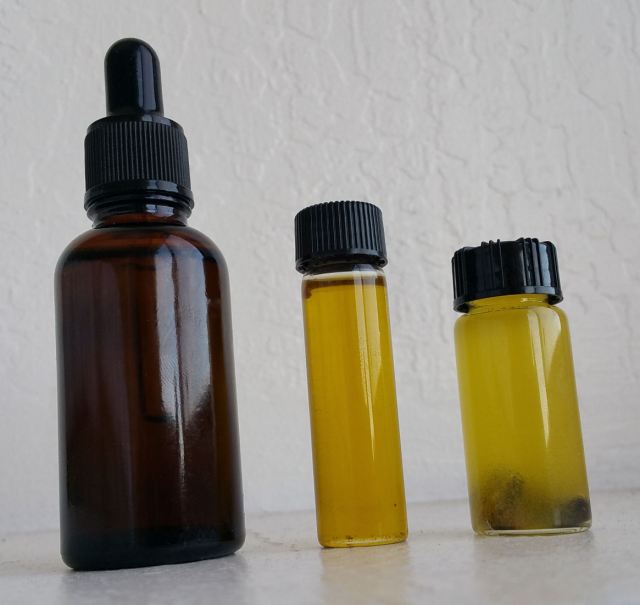
What You Are Bidding On
Your bid price will include all of the following:
- 1 fl. oz. amber glass bottle with eye-dropper cap of my recipe of the holy anointing oil, which has undergone the rituals as outlined in the tutorial; and
- 2 dram (1/4 oz.) clear borosilicate glass vial of the Oil of Abramelin following the recipe and instructions from the Book of Abramelin; and
- 10 ml clear borosilicate glass vial of the Oil of Abramelin following the recipe and instructions from Aleister Crowley’s Book of the Law.
- Handwritten, signed certification letter from me to you of the authenticity of the craft.
There are only 5 (five) bottles available for bidding.
Each emailed bid is for only 1 (one) bottle set. The above bullet list is what’s included in each single (1) bottle set.
Why a Silent Auction?
This offering is less about you buying a bottle of the holy oil and more about you wanting to be a patron and give some financial support to my work.
As you may have noticed, the Tinkering Bell practicum series on my YouTube channel is totally free, and all supplemental reference materials and tutorials have been free.
Yet producing these videos take a ton of labor and time (and for this particular episode, I don’t even want to get into the cost of materials, because I was obsessed with sourcing only the best of the best). Instead of spending more time doing paid professional readings, I have to reduce the number of paid readings I do to make time for these videos. In other words, it’s actually costing me money to provide you with Tinkering Bell.
This silent auction is one little way I’m hoping to raise some money and make the production of Tinkering Bell videos worth it for me. When you participate in this silent auction, yes, of course you’re seeking to acquire the holy anointing oils, but it’s also a huge donation and contribution to my work. You’re helping to be a patron so I can continue what I do. To that extent, from the bottom of my heart, thank you for your bid.
Minimum Bid: Starting Bid
$65. USD
Total Quantity (Sets) Available
5 (five)
How to Place Your Bid
To bid, e-mail me your bidding price to the following address:
abelldelivers@gmail.com
If you live outside the United States, then the bid price excludes shipping costs. Thus, if you reside outside the U.S. and your bid is accepted, then you will also be responsible for shipping costs. Just an FYI: shipping costs from the U.S. to Europe and most Asian countries is insane. So do your due diligence and get an accurate sense of how much shipping is projected to cost you before you bid on the oil. If I’m being totally honest, it may not be worth it for you. I’m so sorry. Postage is just so unreasonable and there really isn’t much I can do about it.
If you reside within the U.S., then good news for you: shipping is free. We’ll cover shipping costs on your behalf.
Will you find out who the oils are awarded to? No, not unless you’re the winner. Accepted bids, of course, will be contacted and we’ll coordinate to get the oil shipped to you. So only those who get the oil will know they’ve gotten the oil. Sorry–names of accepted bids will not be announced or shared with the public.
Will you get the chance to out-bid others? No. You submit one and only one bid price and that’s it. On the closing date, noted below, the highest bids are accepted and that’s it.
Closing Date:
January 27, 2018
At 12:00 am Pacific Time on January 27, 2018, bidding will close and I will sift through all bids to identify the top five. January 27 is a Saturday. That weekend, I will e-mail the five winners and you must reply to the email that weekend. If I don’t hear from you by Sunday night, I’ll move on and contact the next person in line.
Here’s why: A personalized ritual just for you, for your set of oils, will be performed on January 31, during the full moon in Leo, which also happens to be a lunar eclipse. So we need to get squared away with each other well before January 31 so I know what to do for you on January 31.



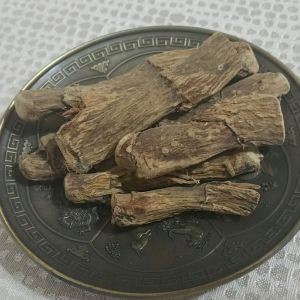


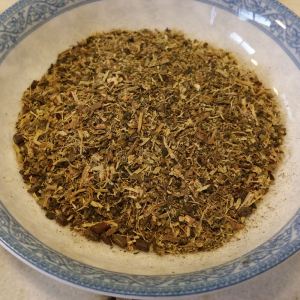
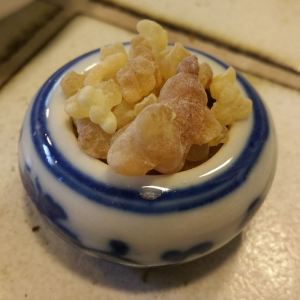

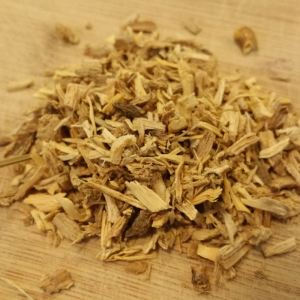
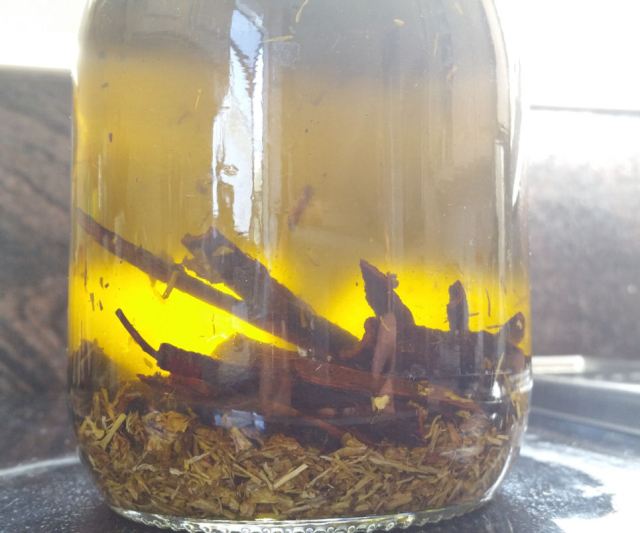
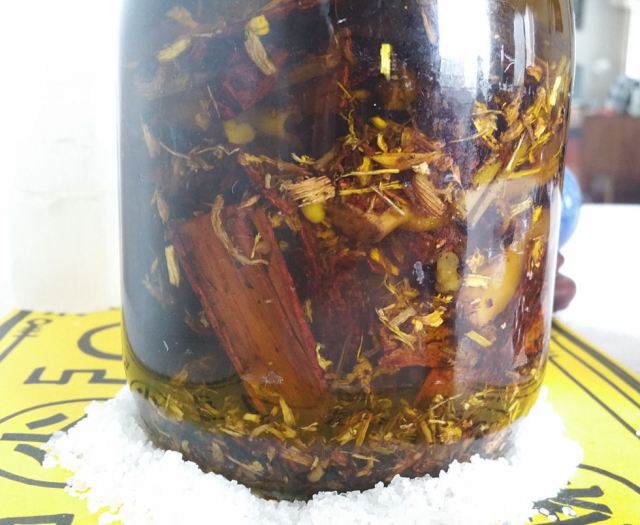
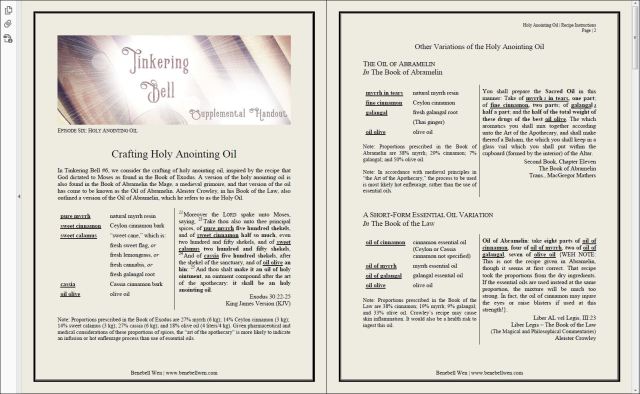
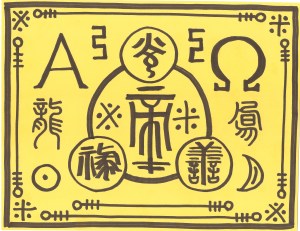


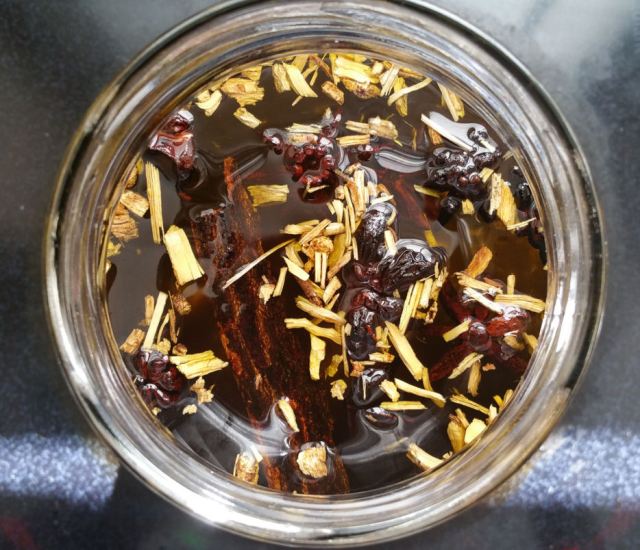

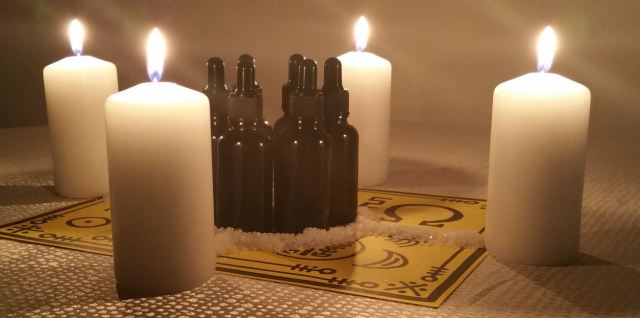
This is the fitting weblog for anyone who needs to seek out out about this topic. You notice so much its nearly arduous to argue with you (not that I actually would wantHaHa). You positively put a brand new spin on a topic thats been written about for years. Great stuff, simply great!
Rexuiz FPS game
LikeLike
Pingback: Practica of Esoteric Craft (Tinkering Bell Series) – benebell wen
Pingback: On Spell Oils (Cf. Anointing Oils) – benebell wen
Pingback: Physical Proofs Are In! Now Awaiting Full Shipment. – benebell wen
Pingback: Behind the Scenes of the Glamorous Deck Creator – benebell wen
Pingback: My 2018 Year in Review – benebell wen
Pingback: Pre-Order Spirit Keeper’s Tarot, Vitruvian Ed. – benebell wen
Pingback: Sanhedrin to Prepare Holy Oil for Messiah | Paul the Poke
Pingback: Important Notice re: SKT Pre-Orders – benebell wen
Pingback: Antiviral Oil: Holistic Wellness Meets Occult Praxis – benebell wen